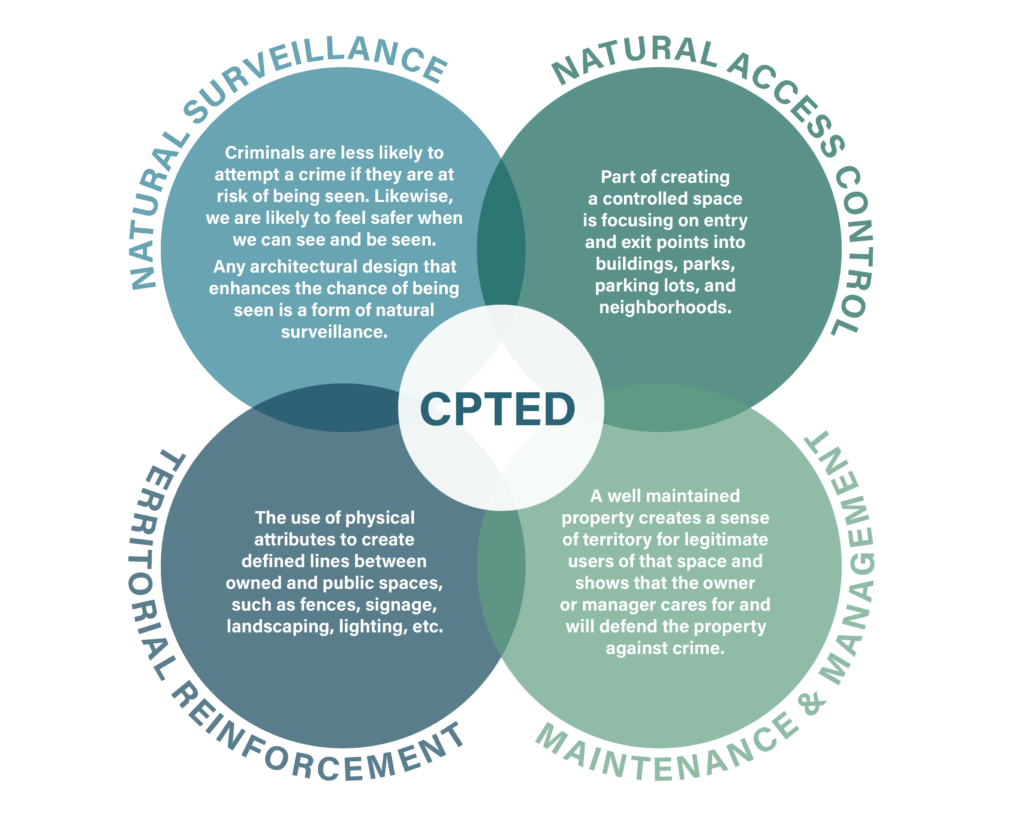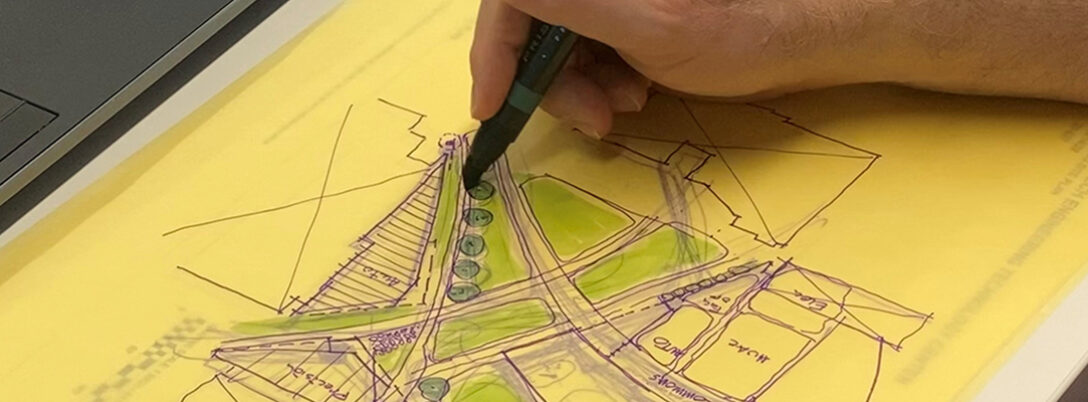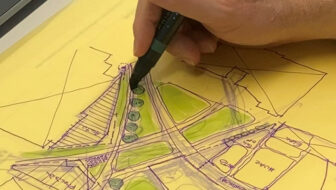It seems that with each new day comes another headline that heeds warning to business owners, educators, and parents about the latest student-led social media trend — one that promotes vandalism and theft of school property for mere amusement and the chance at social media stardom. While the notion of crime is not new, it has never been glamorized to the extent that it is today now that so-called “devious licks” and misconduct of adolescent perpetrators are rewarded with online views and attention. There’s no telling when these trends will pass or what will come next. However, through a series of thoughtful design principals known as Crime Prevention Through Environmental Design or CPTED (pronounced sep-ted), the safety of facilities can be enhanced and opportunities for crime to be committed will diminish.
According to the National Crime Prevention Council, CPTED principals can be applied without interference of the normal use of the space, and it can even be economical to implement if done early in the planning and design stages of a project. CPTED principles suggest that that the design of buildings, landscaping, and outdoor environments can either encourage or discourage crime. Kirsten M. Whitehead is a Project Manager at Paragon Architecture with CPTED Professional Designation (CPD) from the National Institute of Crime Prevention. “CPTED brings a different approach to crime prevention,” says Whitehead. “It is not the ‘bars on the windows’ approach, but an approach in which the environment is properly designed so that it can be safely used for its intended purpose. The intent is to create an environment that can help prevent crime with the resources that are available to encourage positive human behavior.” In addition to law enforcement, home and business owners, planners, developers, and architects can play a greater role in protecting the community and themselves from crime by integrating CPTED principles and concepts into the design and management of the physical environment.1
Having an architectural partner who views your project holistically and truly considers safety and crime prevention, in addition to your needs and budget, is immensely valuable. Whitehead believes that her CPTED training and CPD certification helps her see architectural projects through a different lens. “Looking through that lens, I can evaluate existing facilities or unbuilt projects to try to ensure that the CPTED concepts are being applied, and if not, propose some options for how we can do so.” By implementing CPTED principles in the design of your facilities, your properties can naturally deter criminal activity. The Four Principles of CPTED include:
Natural Surveillance
The concept of natural surveillance boils down to the notion that criminal activity or vandalism is less likely to occur if the culprits are being watched. Natural surveillance can be achieved by a number of techniques. The flow of activities can be directed to put more people, either staff or other observers, near a potential crime area. The removal of obstructions, and the placement of windows and lighting can greatly improve sight lines from within buildings.
Natural Access Control
By naturally, and properly, locating entrances, exits, fencing, landscaping, and lighting to subtly but effectively direct both foot and vehicular traffic, opportunity for criminal activity to take place can be reduced.
Territorial Reinforcement
Territorial Reinforcement means defining property grounds in a clear way that makes it apparent to intruders that they’ve entered a zone in which their activity is visible to people who are monitoring the grounds. For example, school grounds don’t need to be enclosed by an imposing, impenetrable fence. Rather, shorter fences or strategically placed plantings can be used so that clear sightlines all the way from the school to the perimeter of the grounds are achieved.2
Maintenance and Management
Simply put, the more dilapidated an area, the more likely it is to attract unwanted activities. The maintenance and the image of an area can have a major impact on whether it will become targeted. Back to our school example, once we’ve demarcated the school grounds with territorial reinforcement, we must now keep the grounds manicured and maintained to help deter intruders while simultaneously welcoming the community.

Together, these four principles are the foundation of the multi-disciplinary CPTED approach to preventing crime. Designing buildings without security in mind can lead to lawsuits, injuries, the need for additional security personnel, and expensive retrofitting with protection equipment, and operating expenses far greater than they need to be. CPTED continues to be the most reliable and proven approach to accomplish the goal of combining security with design decisions.3 “If the CPTED concepts are implemented,” notes Whitehead, “the impact on your community can be huge — and you can’t put a price on improving the quality of life.”
What does this mean for you? Just because your facility or agency hasn’t experienced a human-motivated risk, like vandalism, theft, or more significant acts of violence, doesn’t mean it won’t happen. It might be wise to consider strategies for your facilities proactively and include them in your next renovation of existing facilities and in the design of any new facilities.4 “I found that the environments in which I live, work, play within can all be designed in a way that can foster a safer environment for everyone,” says Whitehead. “At Paragon Architecture, our mission is focused on positively impacting our communities, and I can’t think of a better way to do that than by providing communities with resources to create a safer space for our students, families, and friends.”
When you’re ready to select an architectural partner who actively implements the principles of Crime Prevention Through Environmental Design (CPTED), we’re happy to take your call. At Paragon Architecture, we work alongside our corporate, healthcare, municipal, and education clients from concept to completion and beyond. Our architects and interior designers are passionate project managers, ready to make our communities better, together. Contact our team today for more information.
References
1 NCPC. (2003). The Crime Prevention Through Environmental Design (CPTED) Guidebook [Ebook]. Singapore. Retrieved from https://www.ncpc.org.sg/cpted.html
2 Penny, J. (2021). Building Safer Schools That Don’t Look Like Prisons. Buildings. Retrieved from https://www.buildings.com/articles/43031/building-safer-schools
3 Atlas, R. (2013). 21st century security and CPTED (2nd ed., pp. 2-7). Boca Raton: CRC Press.
4 Station Design: Fire Station Hardening. (2021). Firehouse. Retrieved from https://www.firehouse.com/stations/article/21209063/station-design-fire-station-hardening



